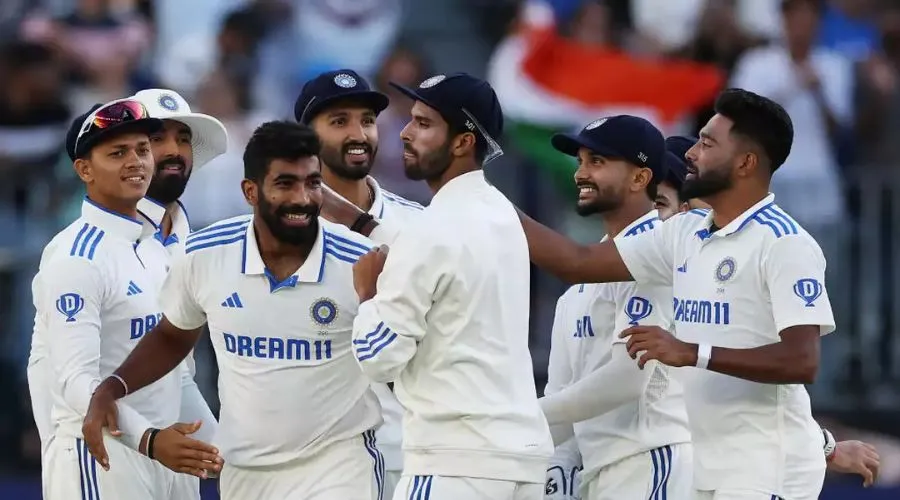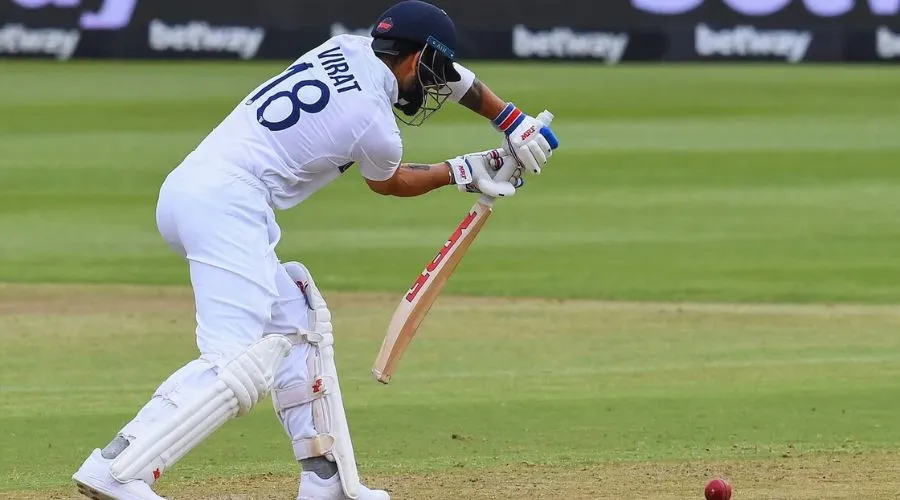Are you eager to know about the follow-on rule in Test Cricket? If you answered yes, this blog can be really helpful to you.
Suppose, two teams are playing a test cricket and one scores over 500 runs, and the second team struggles and gets all out on 130 runs. In this case, the team with more runs will choose whether to bat first or ask the second team to bat immediately.
If the stronger team with more runs asks the opponents to bat immediately, that is where the follow-on rule comes in. To get the complete details regarding how this follow-on rule works, what is the minimum lead required, and more, read this article to the end.
What Is Follow-On Rule In Test Cricket?
The follow-on rule in test cricket allows the team that batted first to force the opposing team to bat again immediately if they score significantly fewer runs in their first innings. The captain of the first team may demand the follow-on if, in a five-day match, the opponent scores 200 runs or less than the first team’s total. This is a calculated move that aims to take advantage of favorable bowling conditions or put pressure on the team left behind. For their second innings, the losing side keeps the usual batting order, although if they overcome the lead or if the follow-on isn’t enforced.
Who Decides The Follow-On Rule In Test Cricket?

The decision to enforce the follow-on rule is always taken by the team who batted first and has a significant lead in runs. If their team has the upper hand and can achieve a result more quickly by bowling out the opponent twice in its first innings total, the captain might choose to proceed with the follow-on. According to Law 14.2 of the Laws of Cricket, “A captain shall notify the umpires and the opposing captain of their decision to take up this option.” Once informed, the choice cannot be altered.
How To Calculate The Follow-On In Test Cricket?
When the team batting second in Test cricket scores a lot fewer runs than the team batting first, a Follow-On rule in Test Cricket is imposed. The lead in the first inning determines the calculation. The difference between X−YX and YX−Y determines eligibility if Team A bats first and scores XXX runs while Team B, batting second, scores YYY.
In matches that last five days or more, the follow-on criteria is 200 runs; in shorter matches, it is 150 runs. In order to increase their chances of winning, Team A may force Team B to bat again right away if their lead reaches or surpasses the threshold.
Advantages And Disadvantages Of Enforcing a Follow-On Rule In Test Cricket
Advantages
- The main aim of enforcing a follow-on is to force a result and eliminate the possibility of a draw by increasing pressure on the opposition, who has already recorded a score below average once.
- Since the bowlers have just defeated the opposition batsmen and are now expected to take another ten wickets with momentum on their side, it also significantly affects their morale.
- In addition to sending an aggressive message to the enemy, this tactic can also be a psychological win by further putting them on the defensive, after they have already been easily carried out once.
Disadvantages
- In the second innings, the batting team may be able to settle in and score runs because the bowlers may not be at their best right immediately.
- Having to bat last when a follow-on is enforced might occasionally be a bad idea because of the pitch’s degradation during the last few days of a Test. It is frequently challenging to win a Test match by batting last due to widening cracks and a deteriorating surface that help the opposition bowlers more.
Has Any Team Won After Follow-On?

Winning a match after having to follow on is an uncommon and amazing victory in Test cricket history. Only four teams have accomplished this thus far. The most famous examples were Australia’s 1894 loss to England at the Sydney Cricket Ground and England’s 1981 victory over Australia at Headingley, which was captained by Ian Botham. In 2001, India made history at Eden Gardens when they defeated Australia thanks to the brave collaboration of Rahul Dravid and VVS Laxman. The last time this happened was in 2023. Such wins highlight the unpredictable and exciting aspect of Test cricket and demonstrate incredible resolve.
When Was The Follow-On Rule In Test Cricket Enforced?
During the first Test match between England and Australia, which took place at the Melbourne Cricket Ground from March 15–19, 1877, the follow-on rule was first applied in Test cricket. If the team batting second is significantly behind the first innings score, this regulation permits them to be asked to bat again right away. The follow-on was not applied in this historic game, though, because England’s margin did not satisfy the necessary standards. In the end, Australia prevailed by 45 runs.
Conclusion
The Follow-On Rule In Test Cricket is a tactical feature that enables the team batting first to make the opponent team bat again immediately if their first innings total is far lower. When the batting team’s first innings score in a five-day Test is 200 runs or more behind the opponent’s total (or 150 runs in shorter matches), the follow-on is specifically imposed. By applying pressure to the losing team, this regulation seeks to save time and improve the likelihood of a result. Enforcing the follow-on bears the risk of wearing out the bowling side, even though it can result in an absolute victory.
FAQ
Q. What happens in the follow-on rule in Test Cricket?
A. In a follow-on test cricket match the team that batted first and has a significantly higher score than the second team can ask the opponent to bat again after being all out in the first inning.
Q. What is the follow-on method in Test cricket?
A. The follow-on method in test cricket says that in a match of five days or more, a side that bats first and leads by at least 200 runs has the choice of asking the other side to follow on.
Q. Has any team won after the follow-on?
A. Yes, there have been 4 such teams that have won after follow-up matches. Those teams were England against Australia in 1894, England against Australia in 1981, India against Australia in 2001, and New Zealand against England.
Q. What is the follow-on score for 578?
A. The follow-on score for 578 would be 378 runs (578-200).
Q. Who is called the night watchman in cricket?
A. A lower-order batter who comes in to bat at upper-order than usual near the end of the day’s play is called the night watchman in cricket.
